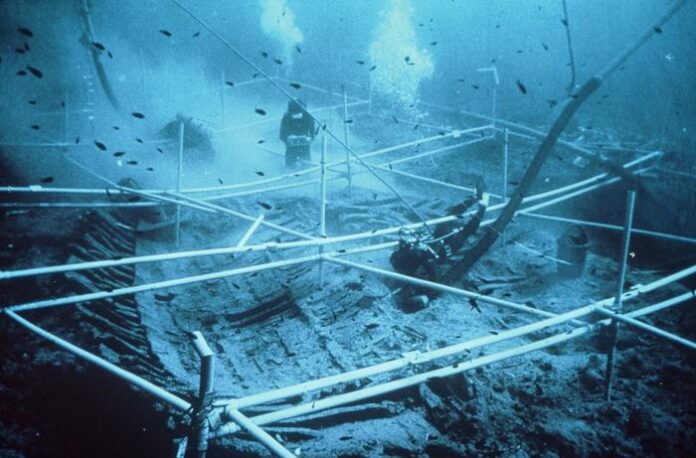Dating can be tricky. If your timing is off, it can result in misunderstandings. This is especially true in fields like archeology and paleontology.
If an item is identified as hailing from an incorrect year, entire lines of research can be put into question. So when Sturt Manning, an archeologist from Cornell University, and colleagues received a radiocarbon date that didn’t appear to line up with the archeological evidence, they tweaked the dating technique and came up with a more definitive time of a famous ship’s sinking, then published their findings in a PLOS One report.
How Accurate Is Radiocarbon Dating?
Although radiocarbon dating, which won a Nobel Prize in 1960, is considered reliable, there can be hiccups. It essentially depends on comparing the half-life of carbon-14 decay to the number of tree rings. But there are variables and confounding factors.
First, the carbon in the atmosphere has fluctuated over time, so the comparison isn’t necessarily a steady curve. Also, the instruments that measure the carbon atoms have become more sensitive and more precise since the technique’s discovery.
Read More: Everything Worth Knowing About … Scientific Dating Methods
Dating the Kyrenia Shipwreck
When Manning and colleagues revisited the age of the ship Kyrenia, discovered in 1965 off the coast of Cyprus, they noticed some discrepancies between archeological evidence of specific coins and pottery types linked to one period, and their carbon-14 dating, which pegged the ship to another.
The physical evidence put the ship’s fateful voyage at around 300 B.C.E., but previous radiocarbon dating efforts put its demise at about 50 years earlier. That didn’t seem to make sense, because one coin appeared to bear the visage of a ruler who wouldn’t have been in power at that time.
“The dates didn’t seem to work because they didn’t compare with the archeological record,” Manning says.
When they looked closer at benchmark dates, they found a gap: There was no validated data connecting tree rings to atmospheric carbon from 350 B.C.E. and 250 B.C.E.
“Nobody had run any dates from this period,” says Manning.
When they filled in that gap, they also employed mass spectrometry, which required 10 to 20 milligrams to have calculated a result, versus the earlier method, which needed 30 to 50 grams. Mass spectrometry is also more sensitive, because it separates out the kinds of carbons, rather than physically counting individual particles. The more modern technique is therefore both more precise and sensitive — and, ultimately, more accurate.
When they applied the revised technique to the ship’s contents, this time the archeological and radiocarbon evidence matched up, putting the ship’s sinking at 280 B.C.E.
“The old radiocarbon data was about 50 years wrong,” says Manning.
Read More: Historic Shipwrecks Preserved as Undersea Museums
The Ptolemaic Empire
A 50-year discrepancy doesn’t seem like much. But it depends on the question a scientist asks.
If they are trying to estimate the age of a particular fossil, a few decades might not make much of a difference. But when pinpointing a particular historical event — like the Kyrenia’s sinking — the implications of being a few decades off can be far greater.
The original speculation fit the period not long after the death of Alexander the Great, which triggered a battle for succession. The revised date matches when Cyprus became part of the Ptolemaic Empire.
“That is a different historical context,” says Manning. And in dating, context is almost as important as timing.
Read More: No One Knows How Many Shipwrecks Exist, So How Do We Find Them?
Article Sources
Our writers at Discovermagazine.com use peer-reviewed studies and high-quality sources for our articles, and our editors review for scientific accuracy and editorial standards. Review the sources used below for this article:
Before joining Discover Magazine, Paul spent over 20 years as a science journalist, specializing in U.S. life science policy and global scientific career issues. He began his career in newspapers, but switched to scientific magazines. His work has appeared in publications including Science News, Science, Nature, and Scientific American.
Source : Discovermagazine






